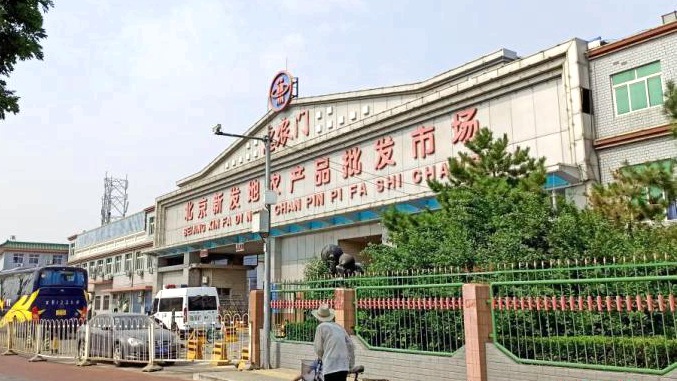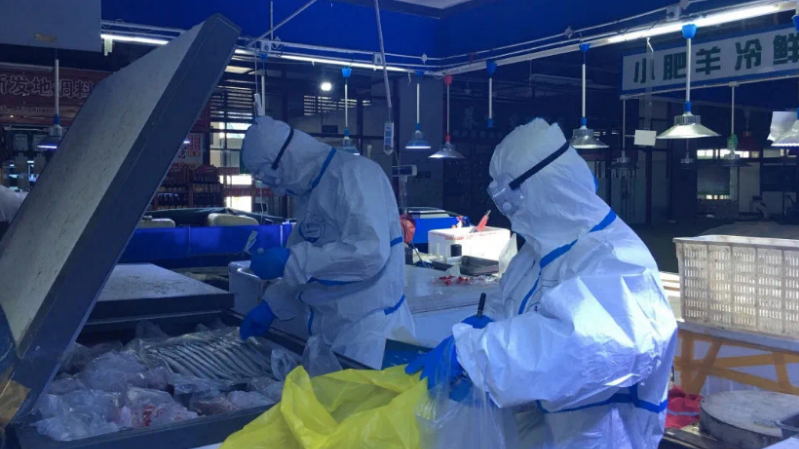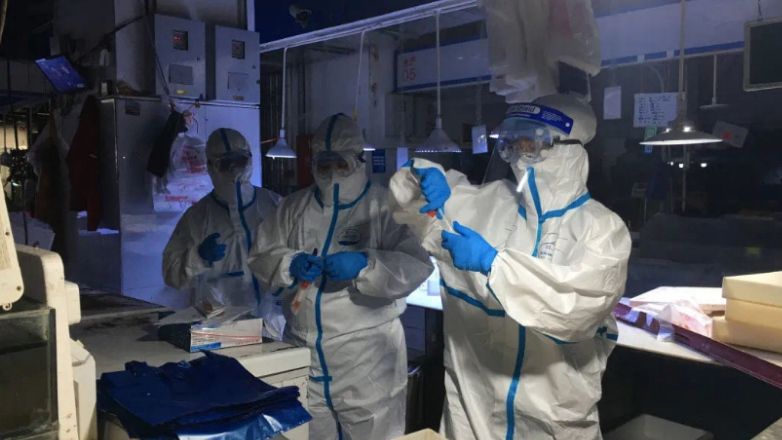
Beijing's Xinfadi wholesale market. /chinanews.com
Beijing's Xinfadi wholesale market. /chinanews.com
After almost two months without new COVID-19 cases, Beijing reported one on June 11, triggering fears of a second wave in the country.
But the city reacted much more swiftly than most thought. It took only 24 hours after the first case was confirmed for the city to identify Xinfadi wholesale market in the Fengtai District as the source of the infection.
Within another 24 hours, Beijing had pinpointed key areas and populations for outbreak containment, and had promptly implemented the strictest epidemiological survey to fully trace the source.
Memory replay
"Xicheng District's Center for Disease Control and Prevention (CDC) reported a case of positive nucleic acid test". This is the message that Dou Xiangfeng, an on-duty physician at Beijing CDC's Institute for Infectious Disease and Endemic Disease Control, received at 0:30 a.m. on June 11. At 2:00 a.m., a sample of the case was sent there for re-verification. Four hours later, the result turned out positive again and the case was confirmed.
Dou and his colleagues from the district's CDC rushed to Xuanwu Hospital at 7:00 a.m. to conduct a supplementary investigation of the confirmed patient, surnamed Tang.
Tang reviewed his call logs, WeChat contents and payment records from May 30 over and over again, and soon afterwards, Dou sorted out several suspicious spots – a supermarket, a convenience food store and a gas station near Tang's home, as well as places he had been to, including Xinfadi market.
Dou helped Tang recall details of his trips as much as possible.
"We started by piecing together what Tang recalled and then narrated it back to him ... which helped him recall more details," said Dou. That's how the missing piece of the puzzle was found.
Payment records matter

Collecting environmental samples at Xinfadi market. /Beijing Daily
Collecting environmental samples at Xinfadi market. /Beijing Daily
The information was shared with the CDC. For each suspicious place that Tang mentioned, CDC staff promptly arranged on-the-spot environmental sampling and tracing, and an investigation of close contacts.
Thanks to payment records on Tang's mobile phone, staff were able to trace when and exactly where in the large market Tang had made purchases, said Dou.
Tang described accurately how he went to the market to buy seafood and meat on June 3. "Supported by the payment records, we got a clear picture of the whole process," Dou recalled.
After more than two hours of communication, Tang had calmly and clearly recalled each person he had contacted in the two weeks before the onset of his illness, and had provided a detailed list of 38 people.
After that, the CDC provided the supplementary epidemiological data to relevant departments for big data screening and the results matched.
Environmental samples positive at Xinfadi

On-site sampling at Xinfadi market. /Beijing Daily
On-site sampling at Xinfadi market. /Beijing Daily
On the night of June 11, a third-party testing agency reported a positive nucleic acid test in the Fengtai District, which became the second confirmed case in Beijing.
"At 7:30 p.m., the agency sent in a sample for re-verification and at 11:30 p.m. the result turned out positive," recalled Dou. "Half an hour later, Fengtai District's CDC found positive test results in environmental samples taken from the hall trading beef and mutton at Xinfadi market."
Dou and a testing team immediately went to the market for an epidemiological survey and on-site sampling.
They re-sampled the first floor underground and collected throat swabs from workers at the market.
"The ventilation inside is very poor, and the cold and humid environment is good for the virus to survive," said Dou.
At the same time, Beijing CDC, together with nine district CDCs, conducted environmental sampling in different divisions of the market.
Forty environmental samples and 45 throat swabs were tested positive that day.
In the next 24 hours, Beijing closed the wholesale market and placed 11 residential communities around the market on lockdown. A mass nucleic acid testing effort was set up for those who had gone to the market since May 30 or who had had close contact with the staff at the market.
On June 18, China's chief epidemiologist Wu Zunyou announced the epidemic situation in Beijing was under control. As of July 2, new cases reported in Beijing had been in the single digits for five consecutive days.